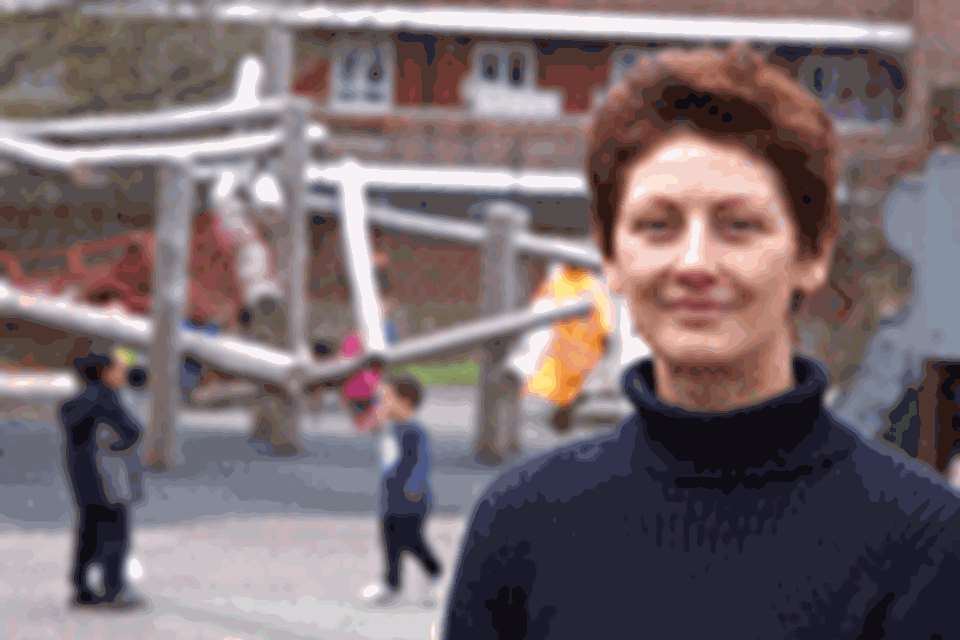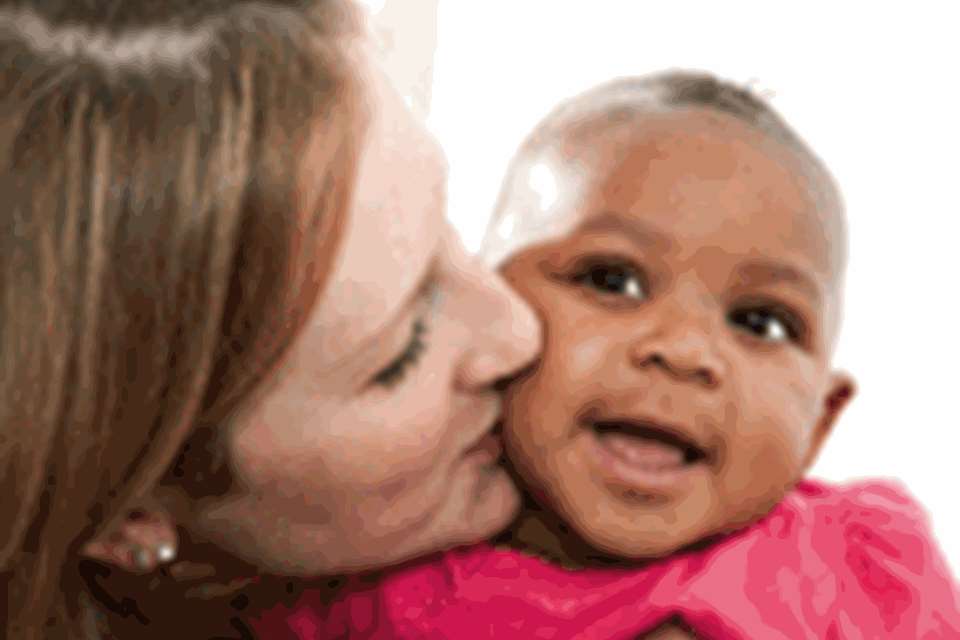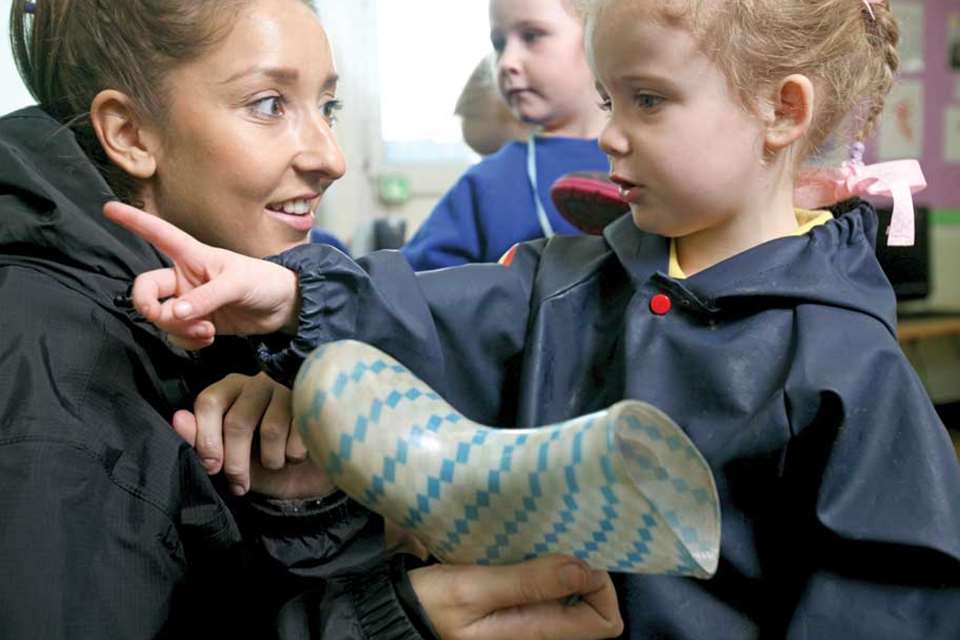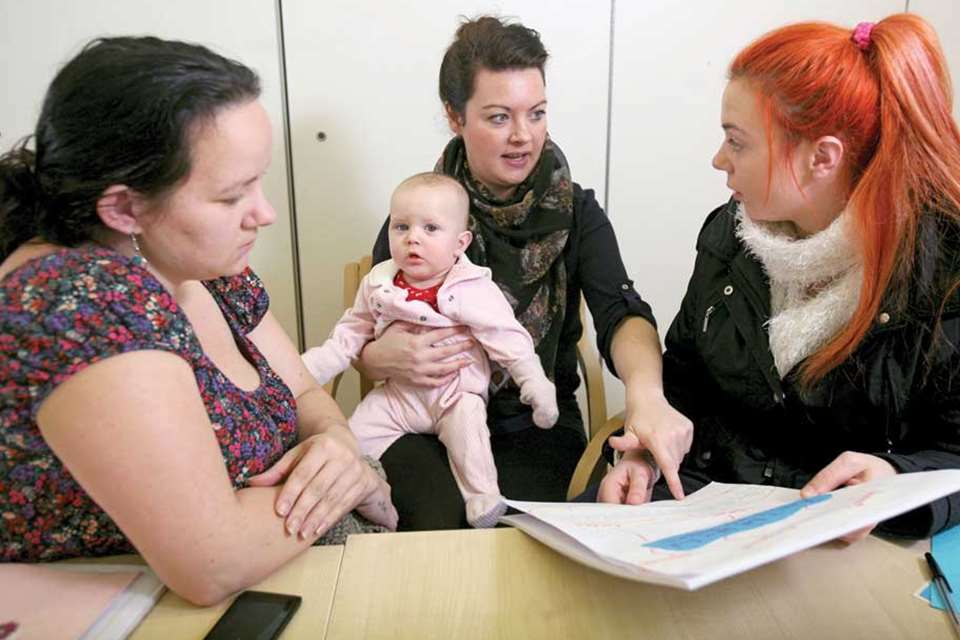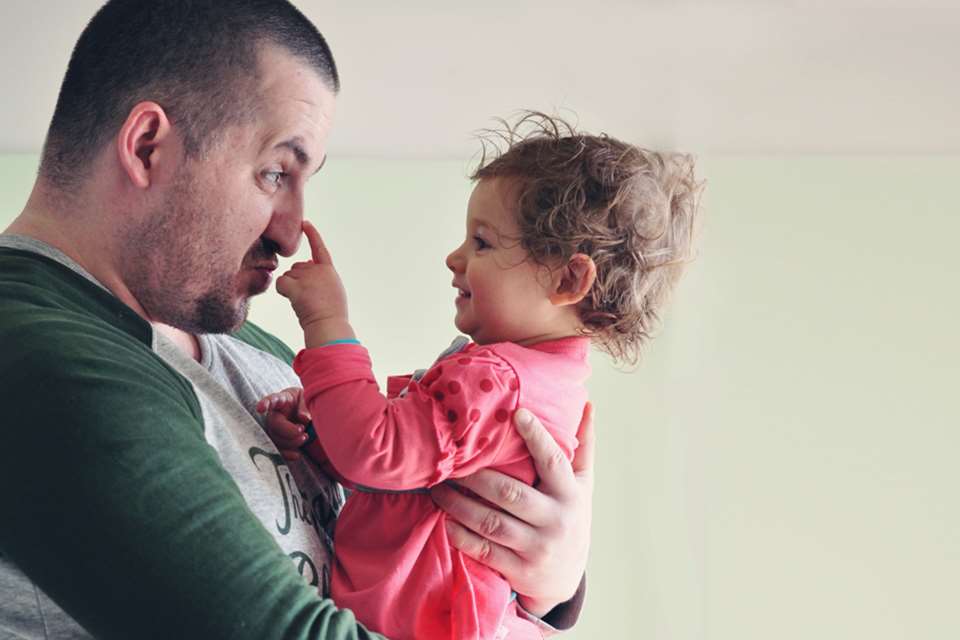EYFS Best Practice: All about… Intergenerational trauma
Ruth Thomson
Monday, August 21, 2017
Exposure to stress and abuse as a child directly affects how that child will go on to parent their own children, explains psychotherapist Robin Balbernie

Anyone who has worked with families will have seen how the traumatic experiences of the previous generation can have a negative influence in the present. Child maltreatment leads to an increased risk of the intergenerational transmission of harmful parenting practices and attitudes. So, parents who suffered abuse as a child are more likely to maltreat or neglect their children than those free of trauma.
Sexual abuse, in particular, appears to sabotage any interest in being a mother, resulting in more neglect, less confidence and poor self-control – and a greater use of physical punishment – in stressful parenting situations.
Parents with a history of maltreatment also have an increased risk of ante- and post-natal depression, post-traumatic stress disorder (PTSD) or borderline personality disorder, substance abuse, self-harm, alcohol and drug misuse, anxiety disorders and post-natal psychosis. All of these will have an impact on parenting behaviour, unless the mental health and emotional needs of both parent and child are addressed.
An adult who was exposed to toxic stress as a very small child will often struggle to cope appropriately with situations of fear, alarm and self-doubt. These are normal feelings evoked by a baby, as babies are designed to be very stressful! Crying is their vital means of communication and our brains are hard-wired to react strongly to the sound.
How well we cope with the demands of parenthood depends on how our stress response was programmed in infancy. It is this early programming that is the main reason for parenting styles crossing generations – we often parent like our parents. However, it is important to make the point that two thirds of parents who were themselves abused during childhood do not go on to harm their children – there are many ‘natural’ protective factors. But that still leaves a lot of vulnerable adults and children who, without help, might well remain trapped in the cycle of intergenerational trauma.
There are a number of psychological and biological pathways on which extreme events can travel through time. The psychological has more to do with a sense of identity while the biological is bound up with survival responses in the face of threat.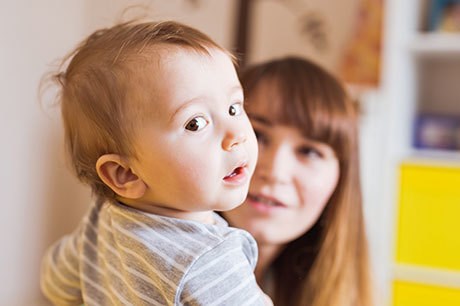
PSYCHOLOGICAL PATHWAYS
Typical case study
Let me begin with a potential child protection case that could have come the way of any childcare professional. An adolescent mother was consistently refusing to touch her baby as much as possible, with care being provided largely by a peripatetic father and a grandmother. Though pleased to be pregnant, the mother was now saying that she hated her child. When I first met her, I realised that the behaviour had come before the attitude.
After a few sessions, she agreed for the grandmother to be present, as I said I wanted to find out more about her (the mother) as a baby (she thought I was nuts). It turned out that the grandmother had suffered a short but severe postnatal depression. So, it had been two months before she had first handled her daughter, who had multiple carers in the interim. This was the first time this story had been shared and my patient was gripped.
From then on there were few problems in the mother looking after her little girl, though there were plenty of other issues. When I followed them up two years later, everything was fine.
Unconscious projection
We all have a tendency to see in another aspects of ourselves that we would rather not address. This unconscious projection is happening when we hear parents say that their child is like some traumatising figure from their past life. Such projection changes the way we see someone, altering attitudes and behaviour and colouring our expectations and judgements.
A small child will be acutely sensitive to this unconscious script, and so may become the child that their parents see. So, in the case study, the ‘untouchable baby’ became a mother who will not touch her baby.
A far more negative example of projection is the baby who gets linked to a past abuser (‘He’s just like…’) or where normal behaviour is misinterpreted (‘She’s crying because she hates me’). Unless help is prompt, the baby becomes a frustrated and aggressive child, thus confirming the parent’s viewpoint and locking the pair into an almost unbreakable cycle of conflict.
Both negative and positive traits are passed on to the next generation by this process of identification. A frightened child will identify with the aggressive parent – to deny their own fear and vulnerability, and to gain safety through the approval that they imagine will come if they mirror the aggression.
As this is unconscious, and they are also denying the terror of being a helpless child, they may repeat such behaviour when a parent.
Attachment theory
In attachment theory, the ‘internal working model’ (Bowlby 1969) is an unconscious process that guides interpersonal behaviour, especially in intimate relationships. It will also one day provide the template for caregiving. Research has categorised attachment styles and shown a continuity between the parenting style and the attachment behaviour of their infant, so:
Warmer, ‘autonomous’ parents tend to have secure children.
Distancing, ‘dismissive’ caregiving leads to avoidant infants (who ignore the caregiver).
Enmeshed, ‘preoccupied’ parents cause resistant or ambivalent behaviour (characterised by clinginess but rejection of the caregiver).
Dysregulated, ‘unresolved’ parenting leads to disorganised attachment.
Each category of adult attachment indicates a different quality of sensitivity, internal regulation, responsiveness and attunement to the baby’s emotional signals – a matter of emotional availability. Unfortunately, the most persistent pattern is the last one.
The internal working model of children who have experienced disorganised and frightening caregiving includes low self-esteem and unconscious, negative expectations of intimate relationships, which will one day bias how they interpret and react to their child’s behaviour. Unless something happens to make them question what they do, they are likely to take for granted their parents’ model of parenting.
This ‘software’ is largely installed in the first two years of life, the time when the right cerebral hemisphere is in its phase of maximum growth, and neuroplasticity is at a peak – and it is here that the circuitry for attachment, stress responses, emotional regulation and self-control are largely located (see below).
Reflective function
The concept of reflective function is important here. This is the proficiency to treat others as psychological beings, to understand that their behaviour is based on invisible factors such as feelings, attitudes and beliefs.
Reflective function is also central to creating a secure attachment in the developing child.
Reflective function helps us put thought between experience and action and is linked to our capacity for emotional regulation and resilience. With this capacity, generational continuity of parenting is more often positive than not.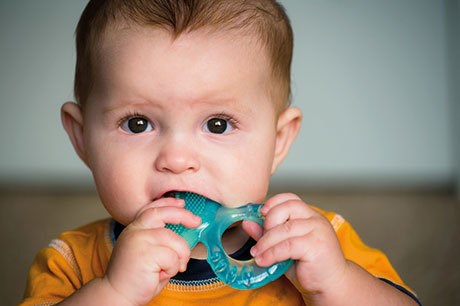
BIOLOGICAL PATHWAYS
Mixed up with the psychological processes are the biological routes whereby a parent’s experiences can influence their child’s behaviour. The first 1,001 days after conception, when neuroplasticity is at its maximum, are critical for the development of the brain.
This applies especially to the right hemisphere where, as we have noted, the main circuitry for self-control, emotional responsiveness, attachment and emotional regulation are located. The child’s experiences of parenting will be reflected in the structure of their brain.
It is modifications to the normal stress responses that are most concerning. A parent’s over-reaction to stress will invariably manifest in rage, just as an under-reaction will be expressed in dissociation. The experience of toxic stress associated with trauma, especially but not only in the first few years of life, can cause long-lasting changes on both a neurological and genetic level (see below). The brain will modify to fit the environment, and trauma refashions the stress response.
Gene expression
Stress rearranges both the way the children interpret the world and their genome. Early adverse experiences are linked to heightened impulsive reactions to negative stimuli, emotional lability and compromised executive functioning. None of these are advantages for parenting.
What are called epigenetic mechanisms alter a gene’s function. These have the task of changing gene expression in response to environmental pressures by adding a chemical signature above the gene that can determine whether or not it is expressed.
Within the developing mind, neurobiological signalling in response to extreme environmental challenges sets off the production of gene regulatory proteins. These then attract or repel the enzymes that, in turn, add or remove epigenetic markers to alter the form and structure of DNA.
The emotional environment of the family, starting at conception and especially during pregnancy and infancy, is the most important factor influencing the expression and modification of genes. It activates and silences genes that are crucial for mental well-being, self-regulation and social and emotional development – all of which will have an influence on parenting. The effect on the developing brain is also considerably greater during the non-verbal period. The baby has no alternatives but to adapt biologically to the environment.
Such epigenetic changes are likely to explain the intergenerational transmission of trauma in times of war and famine. For example, it was discovered that children born to mothers affected by the Dutch wartime famine (1944-45) were at higher risk for schizophrenia and, even if conceived after the famine ended, depression. Grandchildren through the male line were also more prone to be obese.
The offspring of combat veterans are at increased risk for psychological dysfunction, especially when put under stress. And children of Holocaust survivors – born after the war – showed a higher rate of depression, anxiety disorders and PTSD as adults.
It appears that extremely negative early experiences, especially in utero, sometimes have a lifelong negative impact on mental health and the stress response, thus creating poor internal resources for becoming a parent.
Foetal programming
The intrauterine period is an especially critical time as neurons are very sensitive to chemical signals. This lies behind what is known as ‘foetal programming’. Any event that alters neural functioning during development can change the ways in which certain neurons differentiate, thereby altering the operative capacity of the networks in which these neurons reside.
Stress during pregnancy is a major issue here, and illustrates how extremes of experience may sometimes alter the neurohormonal systems in the developing brain in a manner that has unfortunate long-term consequences.
This foetal programming is not inevitable. However, there is a greater likelihood of such children struggling with emotional and cognitive problems, ADHD, anxiety and language delay, independent of the effects of post-natal anxiety or depression.
Extrapolating forward to adulthood and to instances where foetal programming has occurred, the mother will find the struggles involved with parenthood particularly challenging. That struggle will be all the greater if the pregnancy has also been experienced as extremely stressful. The cycle from mother to child may repeat.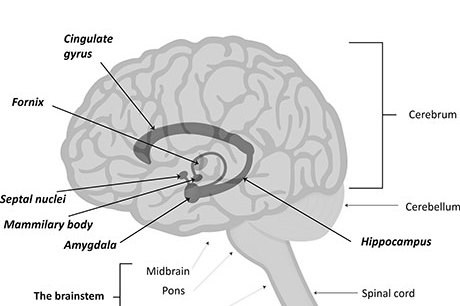
STRESS AND THREAT
As we have seen, it is the effect of these neurological modifications on normal stress responses that is the greatest concern, as these are bound up with our survival responses to threat. To understand how we respond to stress, and threat, we need to consider two areas of the brain (the amygdala and right orbitofrontal cortex) and our autonomic nervous system, which controls and regulates our internal organs, largely unconsciously.
Stress response
The amygdala and orbitofrontal cortex, central to stress response, are directly affected by early experiences.
Amygdala
The amygdala is one of the brain’s appraisal centres and can be seen as the danger-detecting and danger-reacting switch. It is central for processing fear, emotions and memory of emotionally significant events. It protects us by pairing stimuli to reactions faster than thought, and it is involved in appraising risky situations and initiating the fight-and-flight or freeze-and-fade (dissociative) responses to a possible threat.
However, early childhood stress can impair its capacity to regulate the HPA axis (of the hypothalamic, pituitary and adrenal glands), which controls our reactions to stress. And effective regulation is a crucial component in modulating how mothers respond to their children.
Orbitofrontal cortex
The right orbitofrontal cortex is a convergence zone one synapse away from the cortex, limbic structures and brain stem and integrates them into a functional whole. As the major cortical component of the limbic system (roughly speaking, the emotional brain), it is able to moderate the amygdala through conscious deliberation.
It is central to the brain system involved in social adjustment, attachments, the control of mood, drive and responsibility and all those characteristics that define the personality.
A child or adult whose brain has been marinated by maltreatment will activate the amygdala-driven defensive response so quickly that the cue (such as a child’s distress) bypasses the prefrontal cortex without being processed, leading to mindless violence.
Responses to threat
The fight-and-flight or freeze-and-fade responses initiated by the amygdala are, in fact, two opposite response patterns to threat.
Fight and flight
Here, a perception of danger triggers the sympathetic nervous system, which connects the internal organs to the brain by spinal nerves and prepares the body for stressful or emergency situations by increasing heart rate, vigilance and metabolism. If the danger materialises then the fight-and-flight reflex becomes activated.
This is great in combat or if you happen to meet a tiger. However, it is not so good if persistent danger in the early years of life has sensitised this hyperarousal response. Maltreated children stand a good chance of growing up with a hair-trigger stress response, moving quickly from anxiety to terror or from vigilance to violence. This does not make for good parenting.
Freeze and fade
In this instance, the child (or adult) becomes scared stiff. This response is determined largely by the dorsal vagus nerve in the parasympathetic system, which controls body processes during ordinary situations and is linked to periods of rest and relaxation.
If fight or flight is not an option, and the sympathetic nervous system is too aroused, the dorsal vagal mechanism kicks in, releasing the more primitive reptilian survival response where the heart slows and the body moves into energy-conservation mode.
This comprises an end-of-the-line, play dead or die, primitive reaction system that reduces metabolism. The dissociative freeze reaction plays a part in immediate survival and is more often found in very young children (who can neither fight nor flee) and females. However, if it becomes wired-in, and so triggered at a low threshold, then it may severely disrupt the capacity for the sensitive and responsive parenting that is at the heart of secure attachment.
The mother may ‘switch off’ or withdraw when confronted with a distressed child, inadvertently producing the conditions for disorganised attachment. And so the cycle repeats. But we can break it.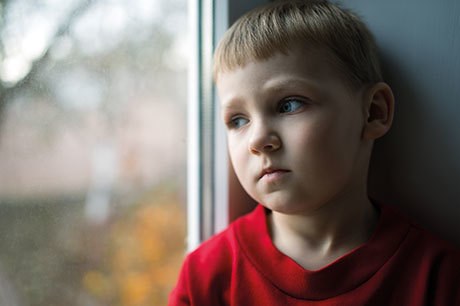
PROMOTING HEALING
The older the child becomes, then the harder it can be to rewire certain areas of the brain. It takes a thought-out relationship to connect with another’s emotional brain in a way that promotes healing. Any form of intervention for a traumatised child, or an adult who cannot shake off responses that once were a means of survival, must begin with creating safety within a relationship.
The peak of neural plasticity occurs in infancy, natural adaptability on all levels is on the side of change, so it is clear that working to prevent maltreatment by improving the caregiving relationship at as early a stage as possible is both kinder and more cost-effective.
Multidisciplinary early intervention teams, such as those set up by PIP UK, are directly tasked to help parents make the best possible relationship that they can with their infants. But it is far better for help to be on offer at a more universal level.
This was the strength of Sure Start children’s centres, as a healthy support network is a prime protective factor. These centres need to be expanded not sacrificed, as they have a pivotal part to play, and the budget saving in the present is dwarfed by the swathe of costs waiting in the future.
There will always be a crucial role for midwives and health visitors in offering direct assistance and in referring to other resources when necessary. The generational repetition of parenting behaviours is complex, the same processes can lead to a positive or negative outcome and the variability depends on experience. Those who work in an early years setting are in an advantageous position to intervene – an exciting responsibility. Just ask, ‘How do you want your grandchildren to be treated?’
Robin Balbernie is a child and adolescent psychotherapist and clinical director of PIP UK
REFERENCES
Intergenerational transmission of parenting in a UK sample, www.ncbi.nlm.nih.gov/pmc/articles/PMC4668327
The long-term effects of maltreatment, http://developingchild.harvard.edu
A network of services dedicated to breaking the intergenerational cycle, www.pipuk.org.uk
The economic case for early intervention, https://heckmanequation.org
The ‘window of opportunity’ offered by the neuroplasticity of the infant brain, http://bit.ly/1PwQCAh
Epigenetics and the influence of pre-birth experiences: www.beginbeforebirth.org; www.whatisepigenetics.com/fundamentals; and www2.le.ac.uk/projects/vgec/schoolscolleges/epigenetics_ethics/Introduction
Findings of the Adverse Childhood Experiences study, www.cdc.gov/violenceprevention/acestudy
Attachment research: www.psychology.sunysb.edu/attachment/index_legacy.html; and www.child-encyclopedia.com/attachment/according-experts
Useful infant mental health sites: www.imhpromotion.ca; www.zerotothree.org; and www.aimh.org.uk


